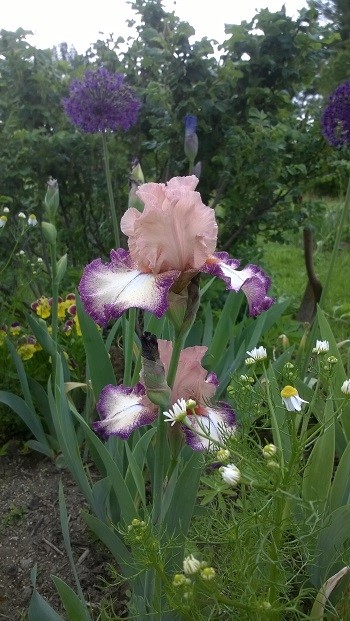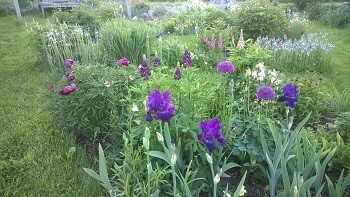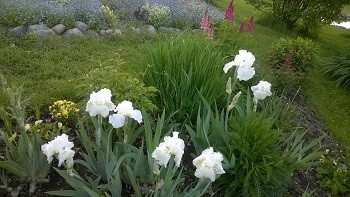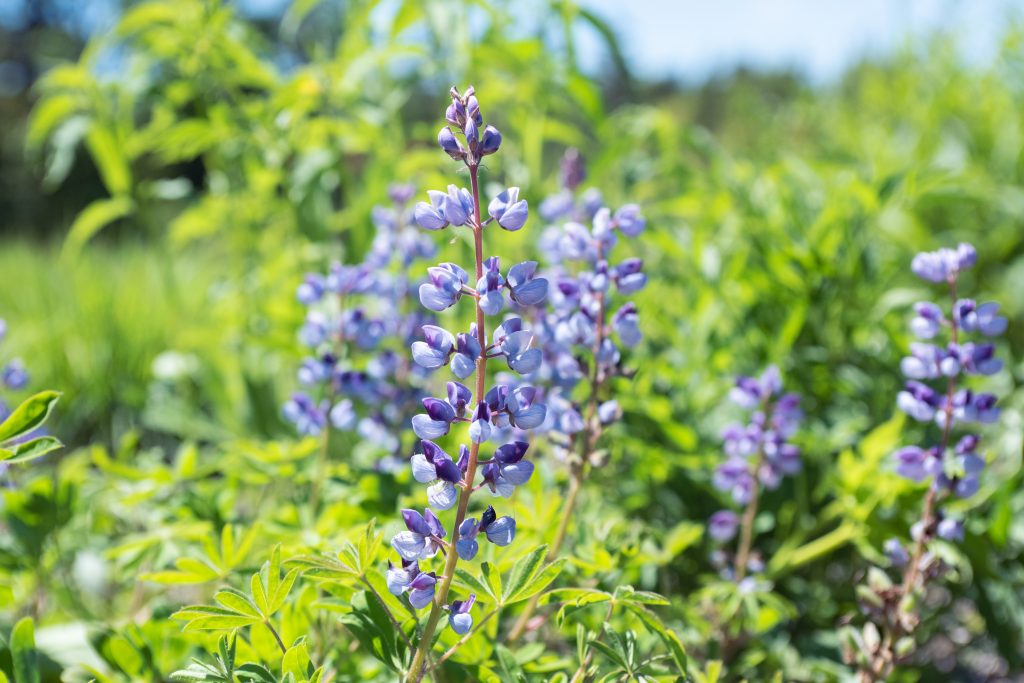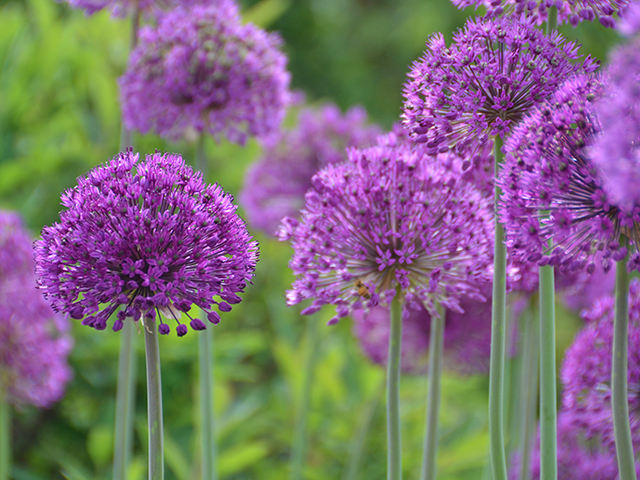I am very fond of most any flower that is currently in bloom, but if I had to live the remainder of my life on a desert island and could only bring one plant with me, it would have to be a flouncy, ostentatious bearded iris. They remind me of colorful, over the top, ball gowns that scream to be noticed. The conditions of my garden also make them the most challenging plant to grow successfully.
In my garden, bearded iris grow best and successfully survive our cold, wet winters as long as I adhere to a strict regimen of summer fertilizing and fall garden cleanup. My heavy clay soil is not ideal for iris, which prefer well-drained sandy loam, and so they struggle to increase in size in the summer and are prone to rotting in the cold, wet soils of early spring. Iris are also plagued with iris borer from early May through August, which, if left unchecked, can wipe out entire colonies of plants in one season. Leaf spot, a fungal disease, is also an issue during the humid months of summer. Keeping a clean garden and understanding the life cycles of iris borer and leaf spot fungus are the best ways to minimize the damage they can bring, ensuring that your plants thrive and easily survive our long winters.
Through the years, I have developed a system that allows me to manage these three issues without having to resort to using pesticides or fungicides and which allows my plants to thrive and bloom heavily.
- Beginning in early May, when the leaves begin to grow, I apply a low-nitrogen granular fertilizer to the tubers. I will fertilize them once more just after they have finished blooming in early to mid-July.
- In early May I also begin looking for signs of borers in earnest. Small, half-moon shaped bites out of the side of a leaf or a wet slimy smudge mark on a leaf are signs that an iris borer larvae has hatched on the plant and entered into the leaf. Immediately, with sharp pruners, remove the affected leaf and dispose of it away from the garden. Do not place leaves with iris borer larvae in your compost. Continue removing leaves with signs of iris borer weekly throughout the summer.
- Fall cleanup is the most critical aspect of managing borer and leaf spot damage from year to year. Removing the eggs of borers and the spores of the leaf spot fungus, both of which overwinter on the dead foliage of the plants, is the best way to minimize these pests during the next spring and summer. Here are the steps to clean your iris plants for healthier plants the following spring.
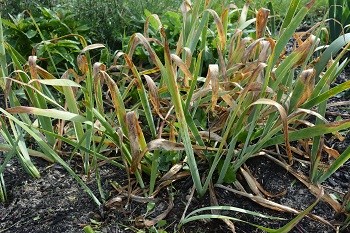
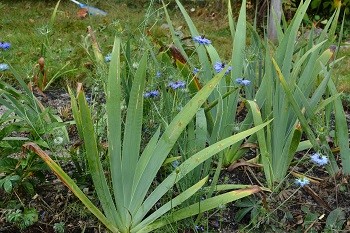
- Start by pulling off all dead leaves from the plants and the ground. The dead ones will separate from the plants and tuber with a gentile tug. Do not try to force them off. It is important to check the ground surrounding the plants to ensure all dead foliage is removed.
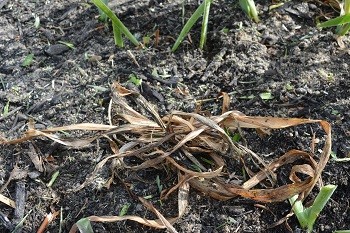
Figure 3. Dead leaves after removal 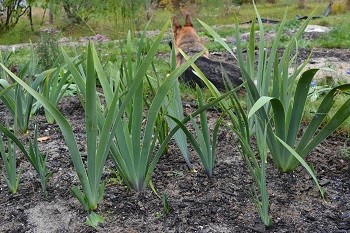
Figure 4. Untrimmed plants (no leaf spot) with dead leaves removed 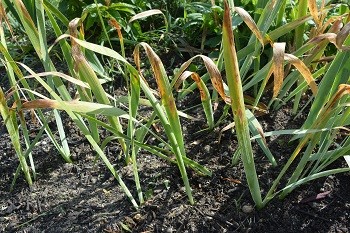
Figure 5. Untrimmed plants (with leaf spot) with dead leaves removed. - Once dead leaves are removed, trim the remaining leaves in an upright triangle about 3 to 4 inches from the ground so that all browned and yellow spotted leaf parts are removed. When you are finished trimming, there should not be any leaves touching the ground.
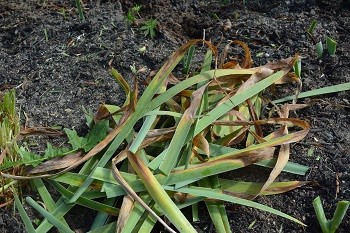
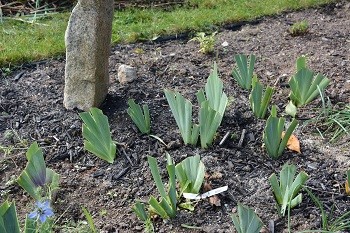
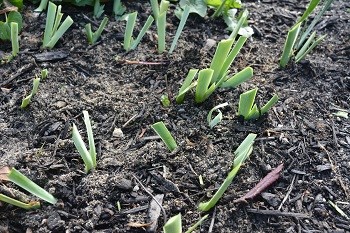
3.When the plants have been trimmed, scan to make certain all leaf debris has been removed from the surface of the bed. Lastly, cover the tubers with a thin coat of sand or sand mixed with bark mulch. This covering will protect the plants against heaving during thaw-freeze cycles during the winter and spring.
4. In late April of the following spring, remove all additional dead foliage as soon as the snow has receded and the plants begin growing. Fertilize in early May and begin looking again for signs of borers. Remove borer sign as needed. In mid to late-June, enjoy the bounty of beautiful and showy flowers.
~Courtney Locke, Staff Horticulturist
